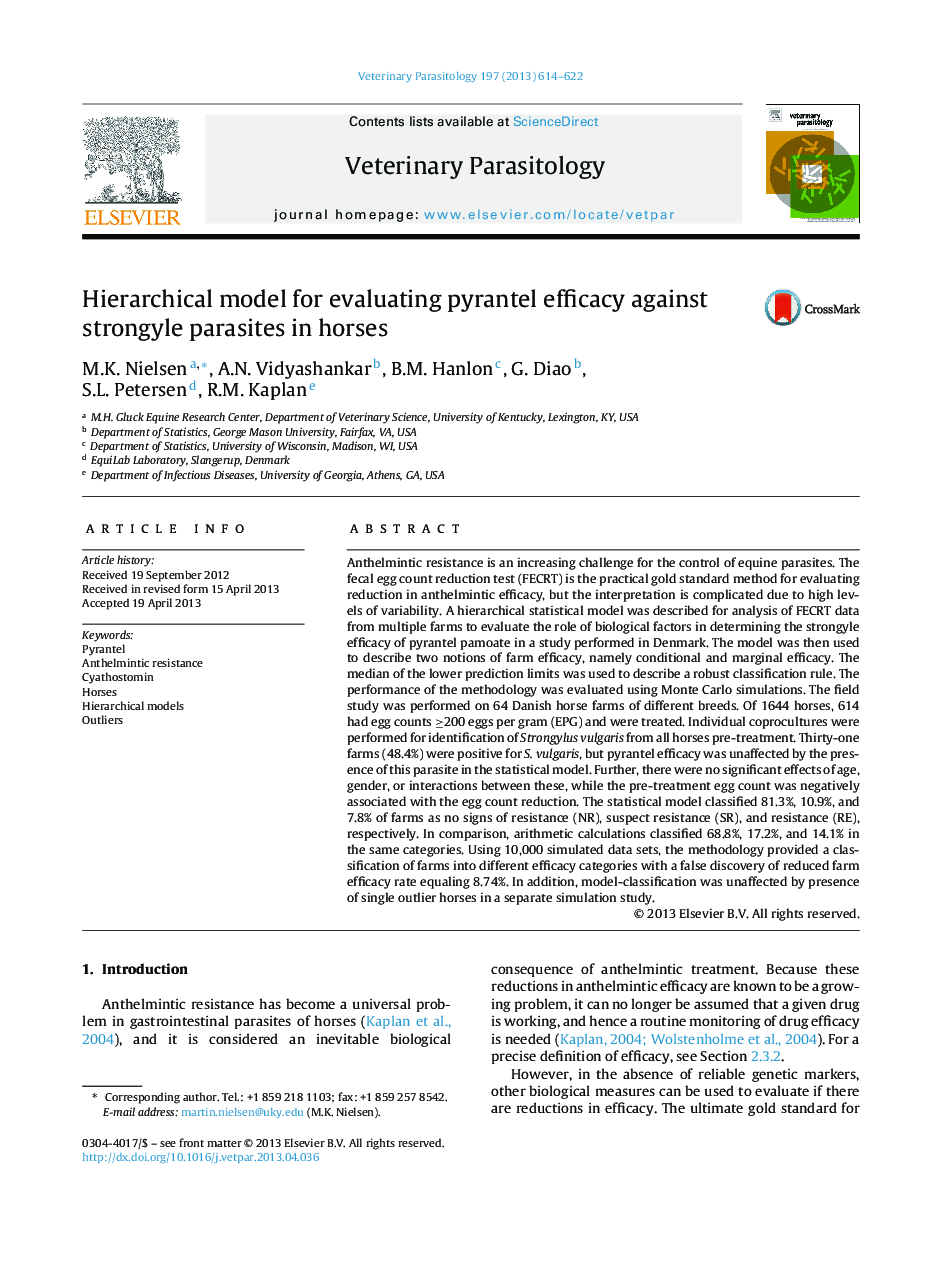| کد مقاله | کد نشریه | سال انتشار | مقاله انگلیسی | نسخه تمام متن |
|---|---|---|---|---|
| 5804011 | 1555696 | 2013 | 9 صفحه PDF | دانلود رایگان |
Anthelmintic resistance is an increasing challenge for the control of equine parasites. The fecal egg count reduction test (FECRT) is the practical gold standard method for evaluating reduction in anthelmintic efficacy, but the interpretation is complicated due to high levels of variability. A hierarchical statistical model was described for analysis of FECRT data from multiple farms to evaluate the role of biological factors in determining the strongyle efficacy of pyrantel pamoate in a study performed in Denmark. The model was then used to describe two notions of farm efficacy, namely conditional and marginal efficacy. The median of the lower prediction limits was used to describe a robust classification rule. The performance of the methodology was evaluated using Monte Carlo simulations. The field study was performed on 64 Danish horse farms of different breeds. Of 1644 horses, 614 had egg counts â¥200 eggs per gram (EPG) and were treated. Individual coprocultures were performed for identification of Strongylus vulgaris from all horses pre-treatment. Thirty-one farms (48.4%) were positive for S. vulgaris, but pyrantel efficacy was unaffected by the presence of this parasite in the statistical model. Further, there were no significant effects of age, gender, or interactions between these, while the pre-treatment egg count was negatively associated with the egg count reduction. The statistical model classified 81.3%, 10.9%, and 7.8% of farms as no signs of resistance (NR), suspect resistance (SR), and resistance (RE), respectively. In comparison, arithmetic calculations classified 68.8%, 17.2%, and 14.1% in the same categories. Using 10,000 simulated data sets, the methodology provided a classification of farms into different efficacy categories with a false discovery of reduced farm efficacy rate equaling 8.74%. In addition, model-classification was unaffected by presence of single outlier horses in a separate simulation study.
Journal: Veterinary Parasitology - Volume 197, Issues 3â4, 8 November 2013, Pages 614-622
